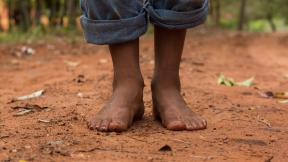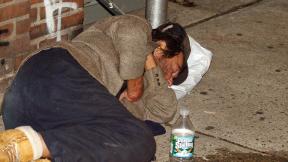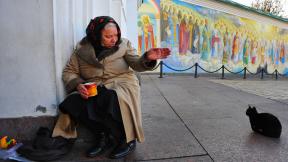
Two trends are largely responsible for the rise in homelessness over the past 15- 20 years: a growing shortage of affordable rental housing and a simultaneous increase in poverty. In instances of poverty due to job loss during the Covid crisis has only made the incidence of homelessness more pressing.
Congress recently passed the America Rescue plan Act (ARP) which will assist with the over $50 billion of rent and utility arrears that struggling renters have accrued during the Covid-19 pandemic. The American Rescue Plan Act also provides funding for states and cities to provide housing stability for people who may be experiencing homelessness.
The Center for Disease Control has an information sheet that displaced or at risk citizens can refer to in regards to homelessness during these times of Covid. It may be accessed here.
Below is an overview of current poverty and housing statistics, as well as additional factors contributing to homelessness, and a list of resources available for further study.
POVERTY
Homelessness and poverty are inextricably linked. Poor people are frequently unable to pay for housing, food, child care, health care, and education. Difficult choices must be made when limited resources cover only some of these necessities. Often it is housing, which absorbs a high proportion of income, that must be dropped. Being poor means being an illness, an accident, or a paycheck away from living on the streets.
Between 1970 and 1988, the number of poor people in the United States increased by almost 26%, from 25.4 million to 31.9 million (Koegel et al, 1996). By 1996, 36.5 million Americans lived in poverty (U.S. Bureau of the Census, 1997a). Moreover, there has been a significant increase in the number of Americans living in extreme poverty: in 1996, 14.4 million people -- nearly two-fifths of all poor persons -- had incomes of less than half the poverty level. This represents an increase of 500,000 from 1995. Forty percent of persons living in poverty are children; in fact, the 1996 poverty rate of 20.5% for children is almost twice as high as the poverty rate for any other age group.
Two factors help account for increasing poverty: eroding labor market opportunities for large segments of the workforce, and the declining value and availability of public benefits.
Eroding Work Opportunities
Since the 1970s, the underemployment rate (which includes the unemployed, the involuntary part-time employed, and those who have given up looking for employment) increased from 8.2% in 1973 to 10.1% in 1995 (Hardin, 1996; Mishel, L., Bernstein, J., and Schmitt, J., 1997). This increase is largely attributable to an increase in joblessness among low-skilled and low-educated workers. Labor market transformations such as deindustrialization, declining rates of unionization, and global economic integration have all contributed to increased joblessness (Hardin, 1996). In addition to increasing underemployment, an estimated 29.4% of the workforce are employed in nonstandard work arrangements -- for example, independent contracting, working for a temporary help agency, day labor, and regular part-time employment (Economic Policy Institute, 1997). These kinds of work arrangements typically offer lower wages, fewer benefts, and less job security.
A second indicator of diminished work opportunities is declining or stagnating wages. For increasing numbers of Americans, work provides no escape from poverty. After adjusting for inflation, the average income of the poorest fifth of families fell $210 (or 1.8 percent) in 1996 (U.S. Bureau of the Census, 1997a). Despite its recent increase, the minimum wage remains 15% below its average purchasing power in the 1970s, after adjusting for inflation (Kaufman, 1997). Declining wages, in turn, have put housing out of reach for many workers: in every state, more than the minimum wage is required to afford a one- or two-bedroom apartment at Fair Market Rent.1 (Kaufman, 1997). In fact, in the median state a minimum-wage worker would have to work 83 hours each week to afford a two-bedroom apartment at 30% of his or her income, which is the federal definition of affordable housing. The connection between impoverished workers and homelessness can be seen in homeless shelters, many of which house significant numbers of full-time wage earners. A survey of 29 U.S. cities found that almost one in five homeless persons is employed in full- or part-time jobs (Waxman and Hinderliter, 1996).
Decline in Public Assistance
The declining value and availability of public assistance is another source of increasing poverty and homelessness. Until its repeal in August 1996, the largest cash assistance program for poor families with children was the Aid to Families with Dependent Children (AFDC) program. Between 1970 and 1994, the typical state's AFDC benefits for a family of three fell 47%, after adjusting for inflation (Greenberg and Baumohl, 1996). The Personal Responsibility and Work Opportunity Reconciliation Act of 1996 repealed the AFDC program and replaced it with a block grant program called Temporary Assistance to Needy Families (TANF). Current TANF benefits are below the poverty level in every state, and in most states they are below 75% of the poverty level. Thus, contrary to popular opinion, welfare does not provide relief from poverty.
In addition to the reduction in the value and availability of welfare benefits for families, recent policy changes have reduced or eliminated public assistance for poor single individuals. Several states have cut or eliminated General Assistance (GA) benefits for single impoverished people, despite evidence that the availability of GA reduces the prevalence of homelessness (Greenberg and Baumohl, 1996). In addition, welfare reform legislation passed in 1996 denies Supplemental Security Income (SSI) eligibility to both legal and undocumented immigrants, leaving these persons more vulnerable to homelessness.
The reduction in the value and availability of public benefits has severely impacted poor Americans' chances of obtaining housing. In 49 states and 357 metropolitan areas, the entire maximum TANF grant level does not fully cover the Fair Market Rent for a two-bedroom apartment (Kaufman, 1997). In ten states, the maximum TANF benefit is less than 50% of rental costs. Poor single individuals do not fare much better: even for those who still qualify for and receive SSI, SSI benefits do not provide the resources needed for adequate housing. In 14 states and 69 metropolitan areas, the entire maximum SSI grant does not cover the Fair Market Rent for a one-bedroom apartment (Kaufman, 1997). In most states, even if the SSI grant does cover the rent, only a few dollars remain for other expenses.Thus, current benefit levels have not kept up with increases in the cost of rent and therefore do not provide families or individuals with adequate allowances for housing.
Welfare caseloads have dropped sharply since the passage and implementation of welfare reform legislation. However, declining welfare rolls simply mean that fewer people are receiving benefits -- not that they are employed or doing better financially. Families and individuals who are terminated from welfare may find difficulty finding jobs for which they are qualified, while those who do find work are most likely to obtain employment in low-paying jobs that offer few benefits. Thus, households left with no income because they cannot find work and households whose work pays little and offers no or few health benefits will face even greater hardship in meeting basic needs.
HOUSING
The status of housing for low-income people in the United States is grim. A lack of affordable housing and the inadequacy of housing assistance programs have contributed to the current housing crisis and to homelessness.
The number of affordable housing units is insufficient to meet needs. Between 1973 and 1993, 2.2 million low-rent units disappeared from the market; 2 during the same period, the number of low-income renters increased by 4.7 million (Lazere, 1995). Thus, the number of low-rent housing units in 1993 totaled 6.5 million. During the same period (1970-1993), the number of low-income renters increased from 7.4 million to 11.2 million. The resulting shortage of 4.7 million affordable housing units is the largest shortage on record. The gap between the number of affordable housing units and the number of people needing them has created a housing crisis for poor people. This housing crisis has resulted in high rent burdens (rents which absorb a high proportion of income), overcrowding, and substandard housing. These phenomena, in turn, have not only forced many to become homeless; they have put a large and growing number of people at risk of becoming homeless. A recent Housing and Urban Development (HUD) study found that 5.3 million unassisted, very low-income households had "worst case needs" for housing assistance in 1993 (U.S. Department of Housing and Urban Development, 1996).3 This figure is an all-time high and represents an 8% increase over the 1989 figure. The same study found that in 1993, almost 95% of those with worst case housing needs paid over half of their income for housing. The study also revealed that the largest increases in households with acute housing needs occurred among families with children, elderly people, and very low-income disabled individuals. These populations are thus especially vulnerable to homelessness.
A housing trend with a particularly severe impact on homelessness is the loss of single room occupancy (SRO) housing. In the past, SRO housing has served to house poor individuals, including poor persons suffering from mental illness or substance abuse. From 1970 to the mid-1980s, an estimated one million SRO units were demolished (Dolbeare, 1996). The demolition of SRO housing was most notable in large cities: between 1970-1982, New York City lost 87% of its $200 per month or less SRO stock; Chicago experienced the total elimination of cubicle hotels; and by 1985, Los Angeles had lost more than half of its downtown SRO housing (Koegel, et al, 1996). Thus the destruction of SRO housing is a major factor in the growth of homelessness in many cities.
Housing assistance programs have failed to prevent homelessness. The demand for assisted housing clearly exceeds the supply: only 26% of those households eligible for housing assistance receive it (Dolbeare, 1996). In its 1996 study on the status of hunger and homelessness in 29 cities, the U.S. Conference of Mayors found that applicants for public housing in the survey cities were forced to wait an average of 19 months from the time they applied until the time they received assistance (Waxman and Hinderliter, 1996). The average wait for Section 8 housing certificates was 31 months; for Section 8 vouchers, the average wait was 32 months. In 17 of the survey cities, the waiting list for at least one assisted housing program was so long the cities actually stopped accepting applications for that program. This data underscores the severity of the housing crisis in urban areas. It also points to a problem that significantly worsens the impact of homelessness. Excessive waiting lists for public housing mean that homeless people must remain in shelters longer. Consequently, there is less space available for other homeless people, who must find shelter elsewhere or live on the streets.Finally, it should be noted that the largest federal housing assistance program is the entitlement to deduct mortgage interest from income for tax purposes. In fact, for every one dollar spent on low income housing programs, the federal treasury loses four dollars to housing-related tax expenditures, 75% of which benefit households in the top fifth of income distribution (Dolbeare, 1996). Moreover, in 1994 the top fifth of households received 61% of all housing benefits (tax and direct), while the bottom fifth received only 18%. Federal housing policy has thus not responded to the needs of low-income households, while disproportionately benefitting the wealthiest Americans.
OTHER FACTORS
Particularly within the context of poverty and insufficient low-cost housing, certain additional factors may push people into homelessness. Other major factors which can contribute to homelessness include the following:
Lack of Affordable Health Care: For families and individuals struggling to pay the rent, a serious illness or disability can start a downward spiral into homelessness, beginning with a lost job, depletion of savings to pay for care, and eventual eviction. In 1996, approximately 41.7 million Americans had no health care insurance (U.S. Bureau of the Census, 1997b). More than a third of persons living in poverty had no health insurance of any kind. The coverage held by many others would not carry them through a catastrophic illness. A recent analysis of Health Care for the Homeless (HCH) projects found that the number of uninsured persons seeking treatment is increasing: overall, HCH programs report a 35% increase in the numbers of patients who are uninsured (O'Connell, J., Lozier, J., and Gingles, K., 1997).
Domestic Violence: Battered women who live in poverty are often forced to choose between abusive relationships and homelessness. A 1990 Ford Foundation study found that 50% of homeless women and children were fleeing abuse (Zorza, 1991). More recently, 46% of cities surveyed by the U.S. Conference of Mayors identified domestic violence as a primary cause of homelessness (Waxman and Hinderliter, 1996).
Mental Illness: Approximately 20-25% of the single adult homeless population suffer from some form of severe and persistent mental illness (Koegel et al, 1996). Despite the disproportionate number of severely mentally ill people among the homeless population, increases in homelessness are not attributable to the release of severely mentally ill people from institutions. Most patients were released from mental hospitals in the 1950s and 1960s, yet vast increases in homelessness did not occur until the 1980s, when incomes and housing options for those living on the margins began to diminish rapidly. According to the Federal Task Force on Homelessness and Severe Mental Illness, only 5-7% of homeless persons with mental illness need to be institutionalized; most can live in the community with the appropriate supportive housing options (Federal Task Force on Homelessness and Severe Mental Illness, 1992). However, many mentally ill homeless people are unable to obtain access to supportive housing and/or other treatment services. The mental health support services most needed include case management, housing, and treatment.
Chemical Dependency: In recent years the relationship between substance abuse and homelessness has stirred much debate. While rates of alcohol and drug abuse are disproportionately high among the homeless population, the increase in homelessness in the 1980s cannot be explained by substance abuse. Many who are addicted to alcohol and drugs never become homeless; but people who are poor and addicted are clearly at increased risk of homelessness. During the 1980s, competition for increasingly scarce low-income housing grew so intense that those with disabilities such as chemical addiction and mental illness were more likely to lose out and find themselves on the streets. Substance abuse does increase the risk of displacement for the precariously housed; in the absence of appropriate treatment, it may doom one's chances of getting housing once on the streets. Getting one's drug problem under control is by no means a certain ticket off the street, however. It is still common for successful graduates of treatment programs to be discharged to the streets or shelters making relapse that much more likely. A 1992 national study of service providers found that 80% of the local treatment programs surveyed could not meet demand and were forced to turn homeless clients away (Williams, 1992). This same study found that uninsured homeless persons seeking residential treatment for substance abuse often faced long waits: for example, 15-30 days in California, 30 days in Massachusetts, and 14 days in North Carolina, while in New Jersey, Montana, and Washington state, the wait was up to 60 days.
Recent SSI policy changes appear to have increased homelessness among impoverished people suffering from chemical addiction. In March 1996, President Clinton signed into law legislation (P.L. 104-121) that denies Supplemental Security Income (SSI) and Social Security Disability Insurance (SSDI) disability benefits and, by extension, access to Medicaid, to people whose addictions are considered to be a 3contributing factor material to2 the determination of their disability status. Thus far, an estimated 140,000 disabled individuals have lost their SSI or SSDI as a result of this legislation. SSI and SSDI benefits are often the only income that stands between an individual and homelessness. Furthermore, they provide access to health care through Medicaid. Preliminary results from a national study to document the effects of SSI eligibility changes for persons served by Health Care for the Homeless projects confirms the suspicion that loss of SSI and SSDI income is resulting in increased homelessness: of 681 homeless clients interviewed, 3.2% had recently lost their SSI or SSDI because of an alcohol or drug-related disability, and of those persons who had been paying for their own housing prior to losing SSI/SSDI benefits, two-thirds lost their housing because they could no longer pay for it (National Health Care for the Homeless Council, 1997).
CONCLUSION
It is clear that homelessness is often the result of a complex set of circumstances which push people into poverty and force impossible choices between food, shelter, and other basic needs. Only a concerted effort to ensure jobs that pay a living wage, adequate benefits for those who cannot work, affordable housing, and access to health care will bring an end to homelessness.
FOOTNOTES
1. FMRs are the monthly amounts "needed to rent privately owned, decent, safe, and sanitary rental housing of a modest (nonluxury) nature with suitable amenities." Federal Register. HUD determines FMRs for localities in all 50 states.
2. These units were either abandoned, converted into condominiums or expensive apartments, or became unaffordable because of cost increases.
3."Worst case needs" refers to those renters with incomes below 50% of the area median income who are involuntarily displaced, pay more than half of their income for rent and utilities, or live in substandard housing.
"Sleeping, homeless children - Jacob Riis" by Jacob Riis (1849-1914) - http://www.zeno.org/Fotografien/B/Riis,+Jacob+A.%3A+%C2%BBNomaden+der+Stra%C3%9Fe%C2%AB,+Stra%C3%9Fenjungen+im+Schlafquartier. Licensed under Public domain via Wikimedia Commons - http://commons.wikimedia.org/wiki/File:Sleeping,_homeless_children_-_Jacob_Riis.jpg#mediaviewer/File:Sleeping,_homeless_children_-_Jacob_Riis.jpg








Add new comment